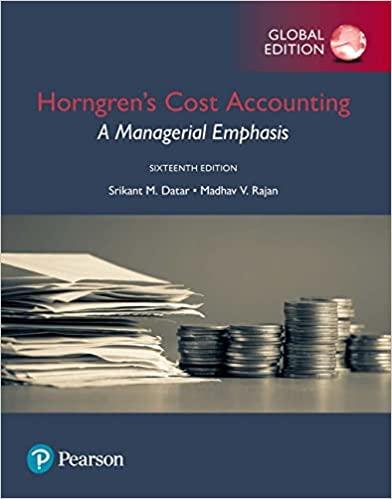The Beta Company started business on January 1, 2017. Beta manufactures a specialty honey soda, which it
Question:
The Beta Company started business on January 1, 2017. Beta manufactures a specialty honey soda, which it sells directly to state-owned distributors in Abu Dhabi. Honey soda is produced and sold in six-packs, and in 2017, Beta produced more six-packs than it was able to sell. In addition to variable and fixed manufacturing overhead, Beta incurred direct materials costs of \($1,012,500,\) direct manufacturing labor costs of \($450,000,\) and fixed marketing and administrative costs of \($341,250.\) For the year, Beta sold a total of 200,000 six-packs for a sales revenue of \($2,700,000\).
Beta’s CFO is convinced that the firm should use an actual costing system but is debating whether to follow variable or absorption costing. The controller notes that Beta’s operating income for the year would be \($460,000\) under variable costing and \($483,000\) under absorption costing. Moreover, the ending finished goods inventory would be valued at \($8.20\) under variable costing and \($9.35\) under absorption costing.
Beta incurs no variable nonmanufacturing expenses.
1. What is Beta’s total contribution margin for 2017?
2. Beta incurs fixed manufacturing costs in addition to its fixed marketing and administrative costs. How much did Beta incur in fixed manufacturing costs in 2017?
3. How many six-packs did Beta produce in 2017?
4. How much variable manufacturing overhead did Beta incur in 2017?
5. For 2017, how much total manufacturing overhead is expensed under variable costing, either through Cost of Goods Sold or as a period expense?
Step by Step Answer:

Horngrens Cost Accounting A Managerial Emphasis
ISBN: 9781292211541
16th Global Edition
Authors: Srikant Datar, Madhav Rajan





